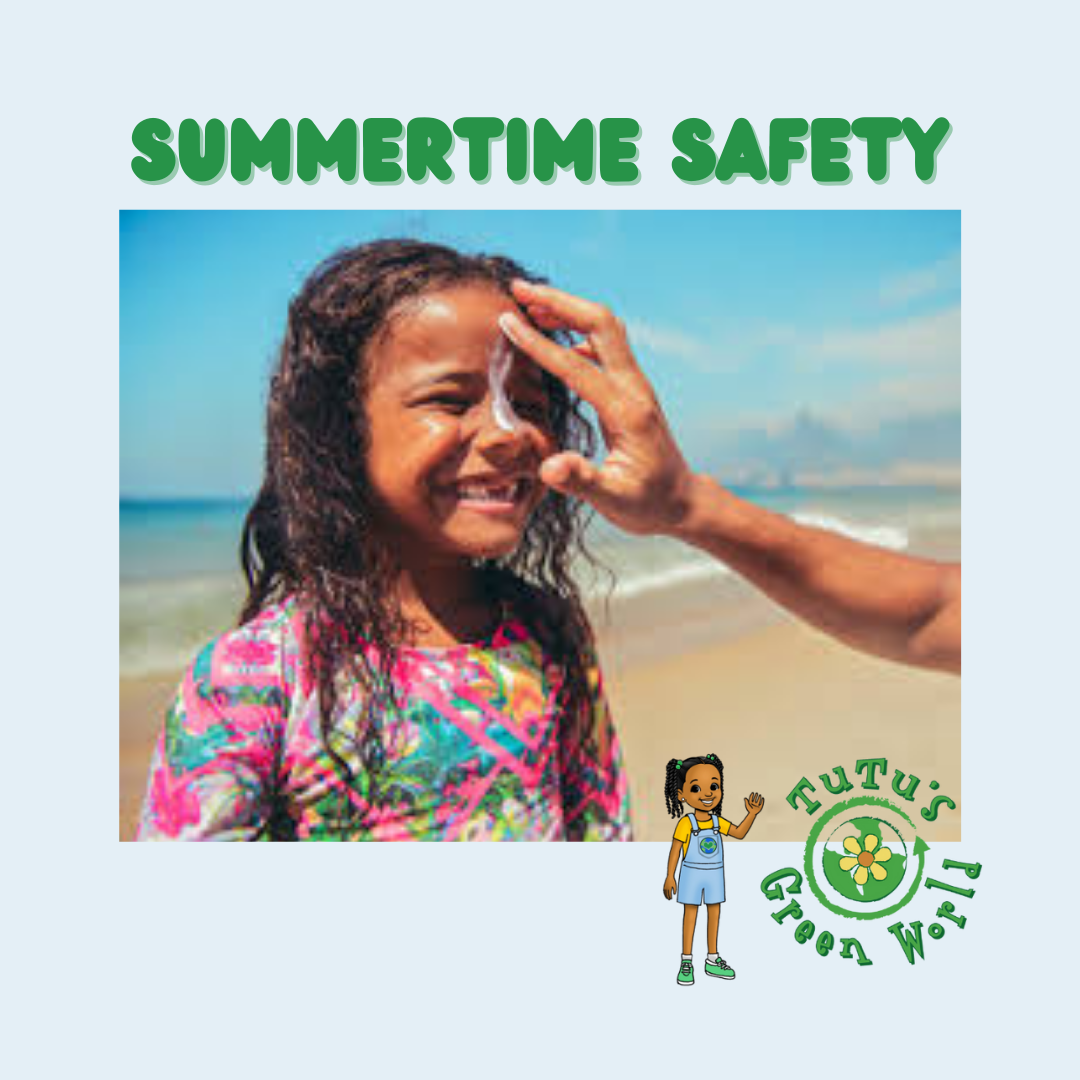
Eco-Friendly Sunscreens for Kids: What to Avoid and What to Look For
Eco-Friendly Sunscreens for Kids: What to Avoid and What to Look For
As we become more conscious of our impact on the environment and the importance of protecting our children from harmful chemicals, choosing the right sunscreen is more important than ever. Eco-friendly sunscreens are not only safe for your kids but also kind to the planet. Here’s a guide on what ingredients to avoid and which ones to look for when selecting a sunscreen for your little ones.
Ingredients to Avoid
-
Oxybenzone: This chemical is widely used in sunscreens for its ability to absorb UV rays, but it can cause allergic skin reactions and hormone disruption. Moreover, it is harmful to coral reefs and marine life.
-
Octinoxate: Like oxybenzone, octinoxate can disrupt hormones and is toxic to marine ecosystems. It's a common UV filter that contributes to coral bleaching.
-
Parabens: These are preservatives used to extend the shelf life of products, but they can mimic estrogen and potentially interfere with hormone function. Parabens are also not biodegradable and can accumulate in the environment.
-
Retinyl Palmitate (Vitamin A Palmitate): This ingredient can speed up the development of skin tumors and lesions when exposed to sunlight. It is also suspected to cause harm to marine life.
-
Synthetic Fragrances: These can contain numerous hidden chemicals, including phthalates, which are linked to hormonal disruptions and allergic reactions. They are also not environmentally friendly as they can contribute to water pollution.
-
Nanoparticles: While they can improve the texture and spreadability of sunscreen, nanoparticles of certain ingredients (like zinc oxide and titanium dioxide) can penetrate the skin and pose health risks. They can also be toxic to aquatic life if washed off in the ocean.
Good Ingredients for Humans and the Earth
-
Non-Nano Zinc Oxide: This is a mineral sunscreen ingredient that provides broad-spectrum UV protection without penetrating the skin or harming marine life. It is stable in sunlight and not linked to hormone disruption.
-
Non-Nano Titanium Dioxide: Another mineral-based UV filter, titanium dioxide is safe for sensitive skin and the environment when used in non-nano form.
-
Natural Oils (e.g., Coconut Oil, Jojoba Oil): These oils are great for moisturizing the skin and are biodegradable. They do not harm marine ecosystems and are gentle on children's sensitive skin.
-
Shea Butter: A natural emollient, shea butter helps to moisturize the skin and provides a natural barrier against the sun. It is environmentally friendly and sustainable.
-
Aloe Vera: Known for its soothing properties, aloe vera can help to calm the skin after sun exposure. It is also biodegradable and safe for the environment.
-
Green Tea Extract: This antioxidant-rich ingredient can help protect the skin from UV damage and has anti-inflammatory properties. It is also eco-friendly.
Tips for Choosing Eco-Friendly Sunscreens
-
Read Labels Carefully: Look for sunscreens that clearly list all ingredients and avoid those containing harmful chemicals.
-
Check Certifications: Look for products certified by environmental organizations like the Environmental Working Group (EWG) or those labeled as reef-safe or biodegradable.
-
Choose Broad-Spectrum Protection: Ensure the sunscreen protects against both UVA and UVB rays for comprehensive skin protection.
-
Opt for Physical Sunscreens: Physical (mineral) sunscreens containing zinc oxide or titanium dioxide are generally safer for both humans and the environment compared to chemical sunscreens.
-
Avoid Spray Sunscreens: Spray sunscreens can create inhalation risks and are more likely to contain harmful chemicals. Stick to lotions or creams instead.
By choosing sunscreens with safe, natural ingredients, you can protect your children’s skin while also caring for our planet. Remember, what’s good for the earth is often good for us too. Happy, safe summer fun in the sun!
Also in TuTu's Green Stuff Blog

Earth Day Fun: How Kids and Schools Celebrated Across the U.S.
Every year on April 22nd, people all over the world celebrate Earth Day, a special time to show love and care for our planet. But this week, the spotlight was on younger changemakers—students, classrooms, and communities coming together in creative and inspiring ways to help protect the Earth.
Across the United States, schools turned into centers of environmental action, learning, and fun. From planting trees to building bee hotels, kids proved that you don’t have to be a grown-up to make a big difference.
Here’s a peek at how Earth Day 2025 was celebrated by awesome kids and schools just like yours!

Earth Day 2025: “Our Power, Our Planet” – Uniting for a Renewable Future
Every April 22nd, Earth Day calls on us to pause, reflect, and recommit to protecting the planet we call home. What started in 1970 as a grassroots movement has grown into a global call to action, reaching over a billion people in more than 190 countries. This year’s Earth Day theme, “Our Power, Our Planet,” reminds us of a profound truth: that we hold the power—individually and collectively—to shape the future of our world.

Celebrate National Gardening Day: Cultivating a Greener Future, One Garden at a Time
Every year on April 14th, National Gardening Day reminds us to dig in, get our hands dirty, and reconnect with the earth. It’s more than a celebration of soil, seeds, and sunshine—it’s an invitation to grow something meaningful. In recent years, National Gardening Day has evolved from a backyard pastime into a growing movement tied deeply to sustainability, resilience, and environmental awareness. As climate concerns continue to rise, gardening offers a beautiful and practical way to contribute to a healthier planet, starting in our own backyards.
